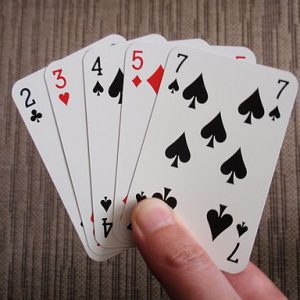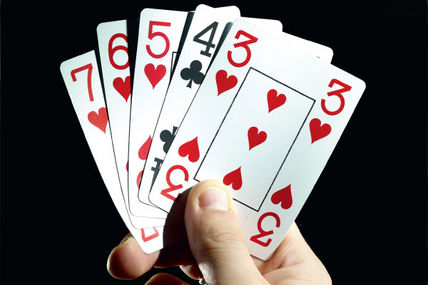Beginners Tips for Triple Draw and NL 2-7 Lowball

Triple Draw and NL Deuce to Seven Lowball have become a staple of many mixed games, particularly 8-Game and Dealer’s Choice. The reason behind this is that both games have something to offer players.
Triple draw lowball fills player’s need for games with action while NL 2-7 single draw gives the excitement of NL Hold’em, but with a twist. Today, we will cover some basic strategy tips for the two games.
Stick With 2 Card Draws or Less in Triple Draw
In Triple Draw 2-7, you want to stick with hands that force you to draw just one or two cards at the most. The best of these hands is clearly a hand that has a high card of seven and any two or three combinations of two, three, or four.
Any three or four-card seven is definitely playable, as well as most eights. You may even want to raise it up with a four-card seven, especially if you are drawing to a wheel or 7-4-3-2-A.
With four card draws, be careful of playing four-card open-ended straights. Hands like 3-4-5-6 are trap hands because eight outs lead to a straight. The exception is 2-3-4-5. In that case, you have a one-way wheel draw which is as good as you can get for a four-card starter.
Bluff More in NL When in Position Against Players Drawing Two or More
In NL, there are many more opportunities to bluff and one of the most obvious is when your opponent is drawing two or more cards. When in position and they draw two, chances are they are going to check to you when they miss.
You will want to throw out a bet at this point. If you drew fewer cards than your opponent, this will work an even higher percentage of the time.
Learn to Snow
A powerful tool in Lowball, particularly NL 2-7 is snowing. Snowing is when you stand pat after the initial draw with a non-made hand. For example, you are dealt 2-3-4-5-6. This is a straight and useless in this game. However, you can consider picking this as a time to snow your opponent.

Would you draw or would you snow?
You’re turning your hand into a complete bluff in hopes of pushing your opponent out of the pot. This move is going to work a solid percentage of the time, particularly against players drawing two cards or more.
The above tips will help you to improve your results in 2-7 and put you ahead of the normal learning curve in the games.
Play More Nines and Tens in NL
A made nine or even a made ten can be a very strong hand in NL 2-7, especially against someone that is drawing two or more. If you draw and catch a nine or even a ten, consider calling a reasonable bet from your opponent. When they check to you, put out a bet, and try and take down the pot right there.
Also, these hands are good bluff catchers. Someone drawing one or two cards may still bet out hoping that you missed your hand. Often, they are going to be calling with anything from a jack-high to a pair or worse.
Don’t Slow Play Made Hands in Triple Draw Above a Seven
Since many players will like to try and draw at you in Triple Draw Lowball, you will want to play your pat hands fast from the beginning. A lot of players are going to take all the free cards you can give, so if you slow play your pat eight or nine, you’re just letting them draw out on you.
If you have a player that is a calling station, then feel free to even fast play your pat seven’s. In lower stakes poker games, you will see players chase down most any hand. Extract maximum value in these situations.
